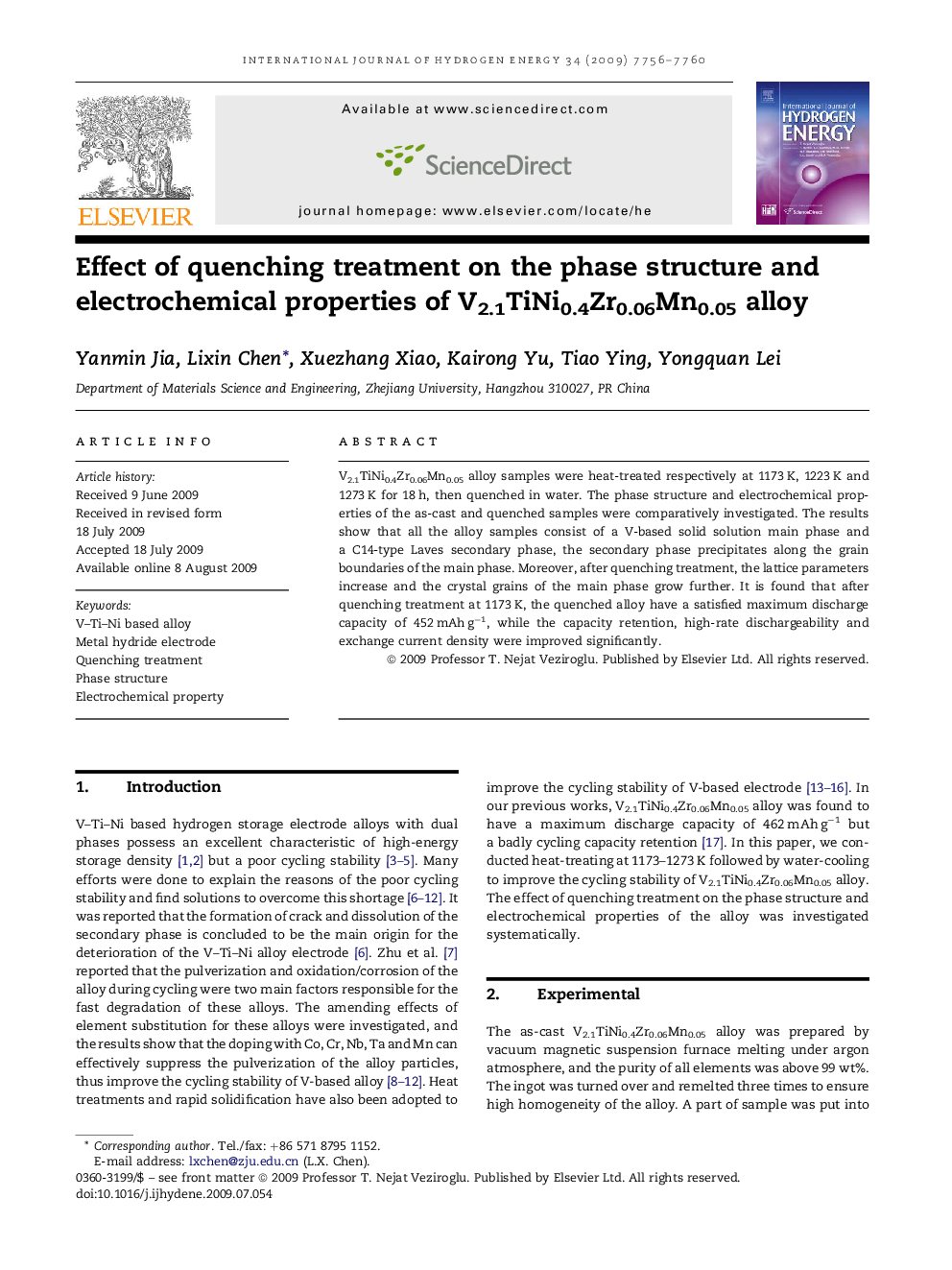| Article ID | Journal | Published Year | Pages | File Type |
|---|---|---|---|---|
| 1277419 | International Journal of Hydrogen Energy | 2009 | 5 Pages |
V2.1TiNi0.4Zr0.06Mn0.05 alloy samples were heat-treated respectively at 1173 K, 1223 K and 1273 K for 18 h, then quenched in water. The phase structure and electrochemical properties of the as-cast and quenched samples were comparatively investigated. The results show that all the alloy samples consist of a V-based solid solution main phase and a C14-type Laves secondary phase, the secondary phase precipitates along the grain boundaries of the main phase. Moreover, after quenching treatment, the lattice parameters increase and the crystal grains of the main phase grow further. It is found that after quenching treatment at 1173 K, the quenched alloy have a satisfied maximum discharge capacity of 452 mAh g−1, while the capacity retention, high-rate dischargeability and exchange current density were improved significantly.
